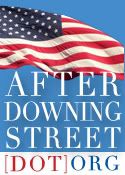ANOTHER DAY, ANOTHER TWENTY-FIVE CENTS
Economic recovery tilts toward wealthiest Americans. Duh:
Mr. Maki of J.P. Morgan Chase estimates that in terms of dollars saved, the top 20% of households by income got 77% of the benefit of the 2003 tax cuts, and roughly 50% of the 2001 tax cuts. And of stocks held by households, roughly 75% are owned by the top 20% of those households. That made them prime beneficiaries of last year's stock-market rally, although also big sufferers from the stock carnage from 2000 to 2002.
The affluent also benefit more from stock dividends, on which the federal income-tax rate was cut last year retroactive to the start of 2003. Total dividend payments have risen 11% to $3 billion since the end of 2002, estimates Berkeley's Mr. Saez. Higher-income households also are larger beneficiaries of the surge in corporate earnings, which helps to drive dividend and stock returns. The level of corporate profits has risen 42% since the last recession, which ended in the final quarter of 2001. Wage and salary income is up just 6.3% in that time...
Many economists say the lopsided recovery is now at a critical juncture. The impetus from new tax cuts has largely passed, and the stock market has lost momentum, two factors that could slow the pace of higher-income people's spending in the months ahead. As a result, the time has come for the recovery either to broaden out to more-modest income groups -- or possibly lose momentum.
The late 1990s showed that lower-wage workers benefit when unemployment falls, as the tighter labor market helps underpin wages across income categories. With the job market improving, there is a chance this could happen again, but the outlook is still highly uncertain. Payroll employment has increased by 1.5 million since last August. And some companies that cater to the mass market say they have noticed the turnaround. "We had a terrific Fourth of July weekend," says Wayne Wielgus, a senior vice president at Choice Hotels International Inc., which serves low- and middle-income travelers with brands like EconoLodge and Comfort Inn.
But some economists worry that the early stage of the recovery for low- to middle-income families is being squeezed by continuing pressure on wages and purchasing power. Average hourly earnings have risen at just a 1.9% annual rate since the job market started improving notably last August. Meanwhile, the consumer-price index -- driven by higher food and gasoline prices -- has risen at a 3.3% annual pace. The average worker's purchasing power, in other words, has declined even as more people have been finding jobs since August.
Weekly earnings for production workers and nonsupervisors at service companies, adjusted for inflation, were down 2.6% in June from a year earlier. This slip might be transitory, and it wasn't anywhere near the drops of 5% to 7.5% registered in the late 1970s and early 1980s. Still, it was the largest decline since 1991, and it is a shift from the late 1990s and even the 2001 recession, when real wages were increasing.
As a result, after rising last year, the University of Michigan's consumer confidence index for lower-income households is off 12% so far this year. Confidence among the affluent is lower as well, but by a smaller 6.7%.
The recovering job market and an easing of food- and gasoline-price increases could reverse some of today's pressures. But these aren't the only issues hanging over lower-income households. Many are also highly exposed to rising interest rates, says Mark Zandi, chief economist at Economy.com, because these households were more likely to take out adjustable-rate mortgages to squeeze into an ever-pricier housing market. For those who don't own homes, the chances of buying have become more remote as house prices have soared. "Lower- and middle-income groups are going to remain under significant pressure," Mr. Zandi says.
Many in this group are also getting squeezed as health-care costs rise and companies seek to shift the burden to workers. From 2000 to 2003, employees' average annual out-of-pocket expenses for family medical premiums rose 49% to $2,412, according to an employer survey by Kaiser Family Foundation, a nonprofit research group in Menlo Park, Calif.





0 Comments:
Post a Comment
<< Home